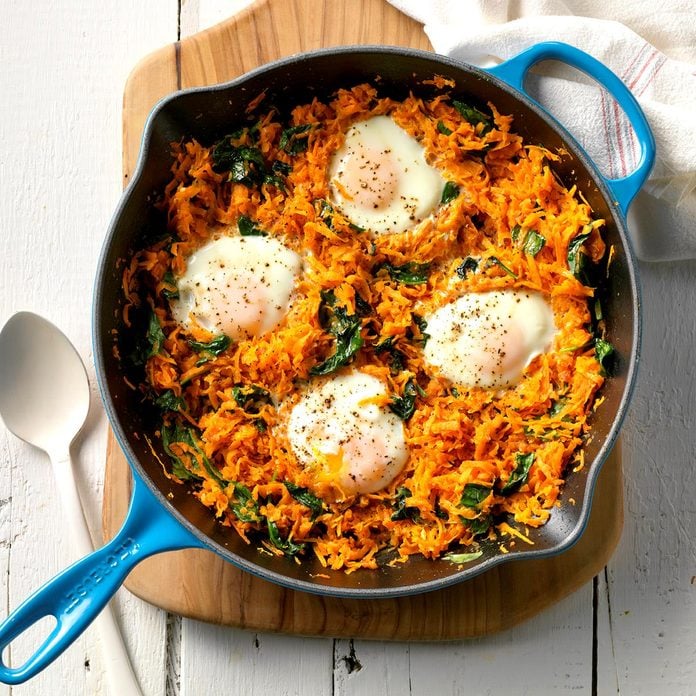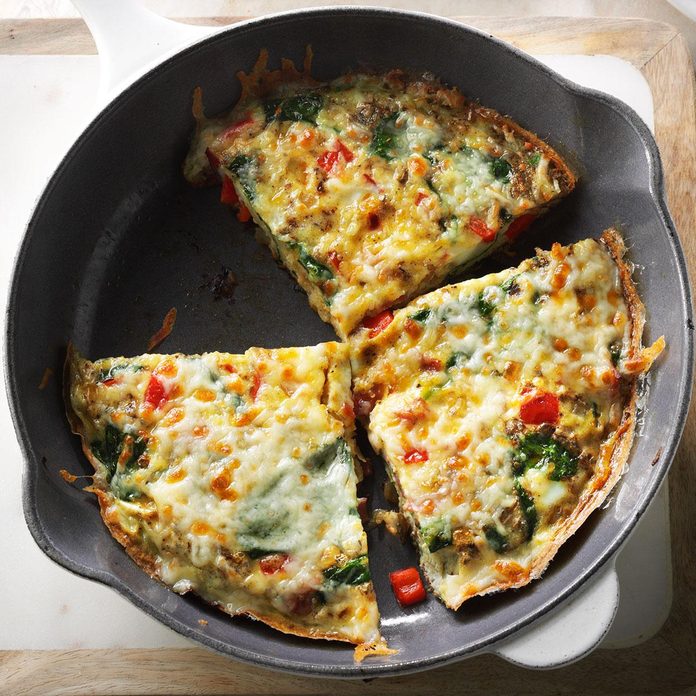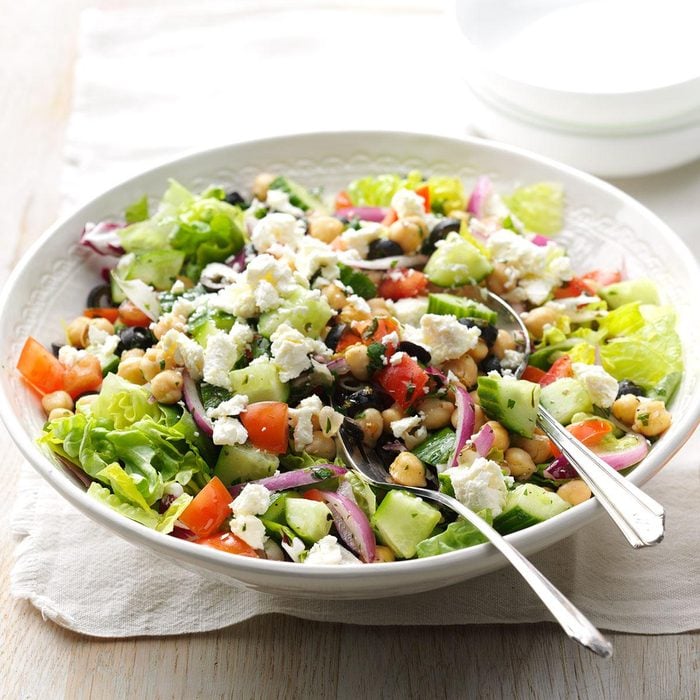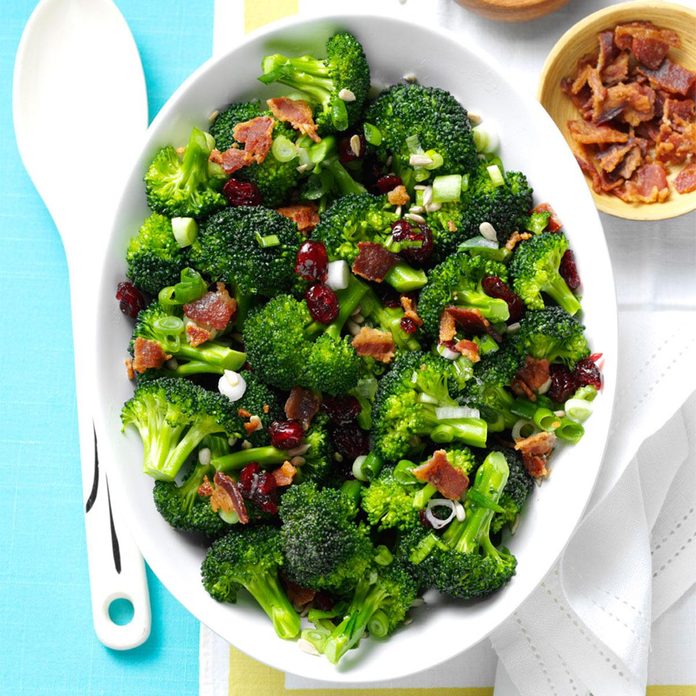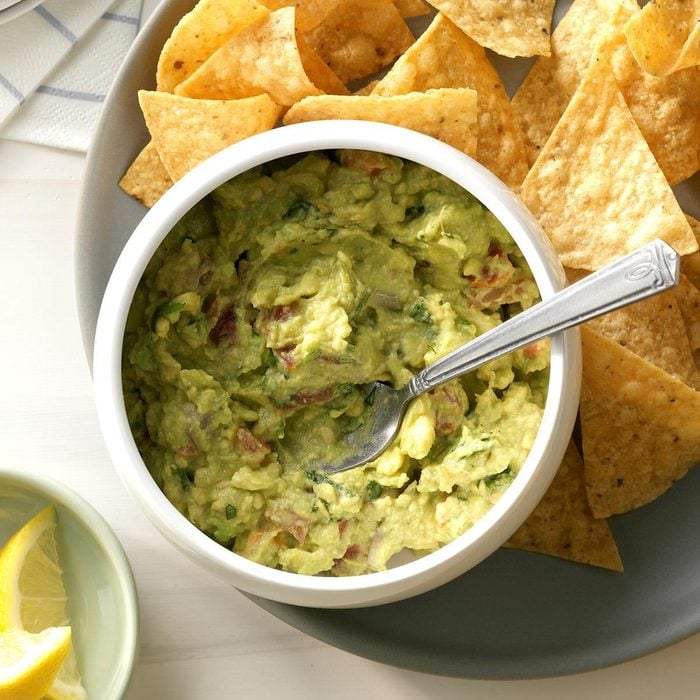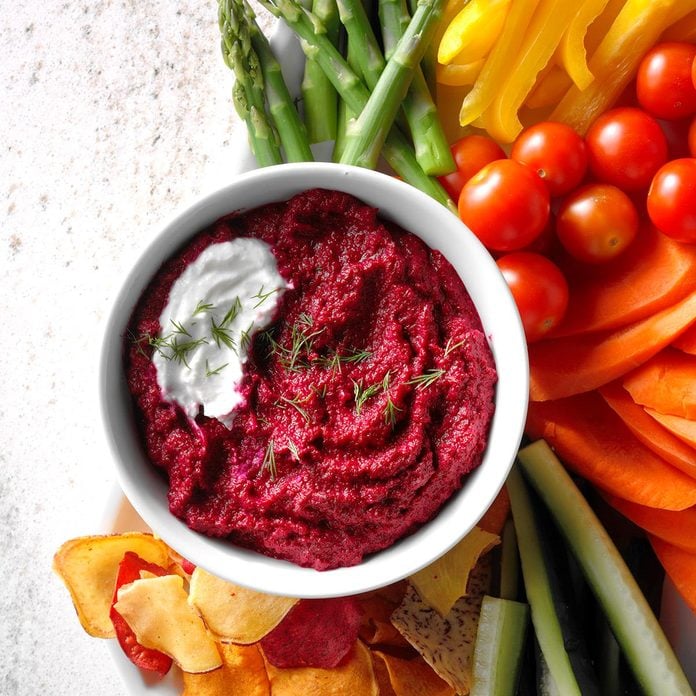According to the Centers for Disease Control and Prevention (CDC), about 1 in 3 adults in the U.S. has prediabetes and more than 84% of those people don’t know they have it. Like having poor eating habits, prediabetes can also increase your risk for developing type 2 diabetes.
Fortunately, type 2 diabetes is preventable—and a prediabetic diet can help.
According to the American Diabetes Association, early action is key for people who have prediabetes or are borderline diabetic. Lifestyle changes play a definite role in getting blood sugars back into a normal range.
What Is Prediabetes?
What you eat and drink affects your blood sugar levels. Eating a lot of refined carbohydrates, as well as frequently drinking sugary beverages, can cause your blood sugar to rise. If your fasting blood sugar is high but not considered high enough to have type 2 diabetes, that’s considered prediabetes.
Look out for signs for prediabetes, like being excessively thirsty, losing weight without trying or urinating frequently. Annual blood tests can also help you keep track of your blood sugar trends from year to year.
Learn more about the foods to avoid when you have prediabetes.
Can I Eat Sugar If I’m Prediabetic?
Yes, the good news is that you can have sugar on a prediabetic diet. However, the type of sugar and how much sugar you eat play a role in controlling blood sugar levels. There are naturally occurring sugars found in foods with nutritional value, such as plain milk products (lactose) and whole fruits (fructose). You may also know that carbohydrate-rich foods like pasta, rice and bread contain starch, which converts to glucose in the body.
In order to improve blood sugar levels, choose carbohydrates with less added sugar and more fiber, like whole grains, fruit and vegetables. The American Heart Association recommends that adults limit added sugar to 6 teaspoons a day (about 100 calories) for women and 9 teaspoons a day (about 150 calories) for men.
Counting Carbs for Prediabetes
Your carbohydrate-rich foods, such as starchy vegetables (potatoes, sweet potatoes, peas and corn), fruits, grains, milk, yogurt and beans, peas and lentils (also called pulses), affect blood sugar levels. It’s important to monitor how much carbohydrate you eat throughout the day to manage your blood sugar.
A prediabetic diet is optimized by understanding how to portion control carbohydrates throughout the day. If you understand how to count carbohydrates, it’s a cinch to keep your blood sugar in a healthy range! The number or grams of carbohydrates is counted based on serving size of a food. What does a serving of carbohydrates look like?
One serving of carbohydrates is 15 grams, such as:
- 1 slice of bread
- 1/3 cup cooked pasta
- 1/3 cup cooked rice
- 1/3 cup cooked quinoa
- 1 small piece of fruit
- 1/2 cup starchy vegetables
- 3/4 cup berries
- 1/2 cup 100% fruit juice
For meals, aim to get 2-4 servings (30-60 grams) of carbs. For a snack, aim to get 1-2 servings (15-20 grams) of carbs. The quality of the carbohydrates count, too. Choose fewer refined flour products, and instead, make half of your grains whole grains, such as brown rice, whole wheat bread, quinoa, barley, oats and/or buckwheat. You’ll get more nutritional value and a lower rise in blood sugar with high fiber carbohydrates.
Portion Control for Prediabetes
Balance your plate on a prediabetic diet by dividing your plate into three compartments: half of your plate is non-starchy veggies, a quarter of your plate is lean protein and the other quarter is starchy vegetables or grains.
Eventually, you’ll be able to eyeball appropriate serving sizes for foods. Here are some visuals to help you portion out the right amount of food:
- 3 ounces of lean red meat, poultry, fish, pork = a deck of cards
- 1 cup of fruit, starchy vegetables or grains = a baseball
- 1 baked potato = a computer mouse
- 1 ounce of nuts = a handful
- 2 tablespoons of peanut butter = a ping pong ball
- 1 teaspoon of olive oil = a postage stamp
Tips for a Healthy Prediabetic Diet
You have an opportunity to keep your blood sugar in a healthy range and prevent type 2 diabetes. Here are some simple ways to stay on track with your prediabetic diet, inspired by healthy eating habits for people with diabetes.
Drink more water
Upping your water intake can help you stay hydrated, improve metabolism and improve your energy levels. Aim for half of your body weight in ounces from fluids, primarily water.
Cut out sugary beverages
Do not drink sugary calories, as your brain does not register the calories from beverages the same way it does with solid foods. Plus, liquid sugar will spike your blood sugar, cause a rise in insulin levels and provide zero nutritional value for the calories.
Eat more fiber
Aim to get 20 to 35 grams of fiber per day from whole fruits, vegetables, whole grains, nuts, seeds and beans. Fiber-rich carbohydrates stabilize blood sugar, fill you up faster and help with weight loss and maintenance.
Eat every 3 to 4 hours
By eating meals and snacks at regular times every day, you will stabilize your blood sugar, fend off cravings and keep your metabolism humming along.
Balance meals and snacks with protein
Since protein-rich foods do not turn into glucose, you will keep blood sugar in control, fuel muscle mass and boost metabolism a bit, since digesting protein foods requires slightly more calories. Choose lean protein sources when you can, such as lean meat, poultry, seafood, tofu, beans, lentils, nuts and nut butters.
Sweeten foods yourself
Instead of presweetened cereals, yogurt and coffee drinks, add your own sweetness with a drizzle of honey, agave nectar or 100% pure maple syrup. You’re bound to get less added sugar when you add it yourself, plus you can control how much is in your foods and beverages.
Plan your meals and snacks
Keeping blood sugar in control requires planning. By taking stock of what’s in your fridge and pantry for the week, you can better plan what you’ll eat. If you plan for Monday through Wednesday and then regroup for the latter part of the week, that can work well. By having healthy foods accessible, it’s more of a guarantee that you’ll have balanced meals and snacks. If you’re in a time crunch, find blood sugar-friendly fast-food options.
The bottom line is that a prediabetic diet can help you manage your blood sugar and prevent type 2 diabetes. If you need help building an eating plan, consult a registered dietitian nutritionist (RDN) and/or a certified diabetes educator (CDE).
Recipes for Anyone Who's Been Diagnosed with Prediabetes
What Is Prediabetes?
It's a health condition where blood sugar levels are above normal but not yet high enough to be diagnosed as type 2 diabetes. If you've recently been diagnosed with prediabetes, know that you're not alone. Prediabetes affects more than 1 in 3 adults in the United States. But there's good news! Lifestyle changes, including what you eat, can prevent or delay the onset of type 2 diabetes. We've rounded up healthy recipes to help you get started.
Nutrition Facts 1/2 omelet: 271 calories, 19g fat (5g saturated fat), 378mg cholesterol, 475mg sodium, 7g carbohydrate (3g sugars, 2g fiber), 18g protein. Diabetic Exchanges: 2 medium-fat meat, 2 fat, 1 vegetable. Omelets are an opportunity to get a jump-start on vegetables for the day. And with portobello mushrooms, spinach and onions, this Greek omelet delivers. True to its Greek inspiration, feta is a smart choice here. The crumbly cheese packs lots of flavor while keeping saturated fat on the lower end.
Nutrition Facts 1 serving: 224 calories, 11g fat (5g saturated fat), 201mg cholesterol, 433mg sodium, 24g carbohydrate (10g sugars, 3g fiber), 8g protein. Diabetic Exchanges: 1-1/2 starch, 1-1/2 fat, 1 medium-fat meat.Sweet potatoes are a good source of fiber, which might help slow down digestion and help you feel full longer. This a big win for anyone —with or without prediabetes. This dish combines hearty sweet potatoes with eggs and spinach for an easy breakfast or brunch meal.
Nutrition Facts 1 slice: 176 calories, 11g fat (4g saturated fat), 174mg cholesterol, 451mg sodium, 4g carbohydrate (2g sugars, 1g fiber), 15g protein. Diabetic Exchanges: 2 medium-fat meat, 1/2 fat. Breakfast, lunch, dinner? You decide. In just 30 minutes, this frittata Florentine can be anything you want it to be. Add a side salad to complete this protein- and veggie-packed meal.
Nutrition Facts 2 cups: 268 calories, 16g fat (3g saturated fat), 8mg cholesterol, 586mg sodium, 24g carbohydrate (4g sugars, 7g fiber), 9g protein. Diabetic Exchanges: 3 fat, 1 starch, 1 lean meat, 1 vegetable. Perfect for the person with prediabetes who's also vegetarian, this Mediterranean- inspired salad uses cooked (or canned) chickpeas to help get this lunch on the table in only 15 minutes. Add grilled chicken for even more staying power.
Nutrition Facts 1 serving: 386 calories, 27g fat (4g saturated fat), 57mg cholesterol, 614mg sodium, 15g carbohydrate (7g sugars, 5g fiber), 23g protein. Diabetic Exchanges: 3 lean meat, 3 fat, 2 vegetable. Healthy fats, such as those found in salmon, nuts and avocado can help boost the satiety factor in meals. This can come in handy when you're cutting back on the amount of bread or other starchy foods on the plate. And this salad really delivers on healthy fats, protein and vegetables.
Nutrition Facts 2 stuffed pepper halves: 323 calories, 10g fat (0 saturated fat), 45mg cholesterol, 771mg sodium, 20g carbohydrate (6g sugars, 4g fiber), 40g protein. Diabetic Exchanges: 5 lean meat, 2 vegetable, 1 starch, 1/2 fat. This classic family favorite uses extra-lean ground turkey to keep saturated fat low, which is important for heart health. With colorful bell peppers and fragrant onion, garlic and spices, this recipe is easy to put together and weighs in with just one carbohydrate serving (that's 15 g carbohydrate for those who
count carbs).
Nutrition Facts 1 cup: 222 calories, 9g fat (2g saturated fat), 67mg cholesterol, 791mg sodium, 10g carbohydrate (5g sugars, 2g fiber), 25g protein. Diabetic Exchanges: 3 lean meat, 2 vegetable, 1/2 fat. This stew combines the flavors of the popular General Tso's dish using a slow cooker. It's brimming with broccoli, peppers, onion and chicken—though you can add your favorite protein, too. Serve over brown rice or quinoa for a complete fiber-rich meal.
Nutrition Facts 1-1/4 cups: 205 calories, 3g fat (1g saturated fat), 125mg cholesterol, 483mg sodium, 15g carbohydrate (8g sugars, 3g fiber), 29g protein. Diabetic Exchanges: 3 lean meat, 2 vegetable. Seafood lovers will fawn over this simple stew packed with shrimp, fish, crab and clams. The rich white wine tomato broth adds incredible flavor. Serve a bowl with a piece of crusty sourdough bread—because yes, people with prediabetes can eat bread! And there's plenty of room for it. This cioppino has just 15g carbs per serving.
Nutrition Facts 1 cup: 260 calories, 2g fat (1g saturated fat), 21mg cholesterol, 728mg sodium, 39g carbohydrate (7g sugars, 15g fiber), 23g protein. Diabetic Exchanges: 2-1/2 starch, 2 lean meat. This "dump and press start" slow cooker recipe uses green split peas as the base. The hearty soup delivers a whopping 15g of fiber and 23g of protein for a simple and satisfying meal. Keep the sodium down and add even more flavor with a homemade broth or stock.
Nutrition Facts 1 stuffed chicken breast: 347 calories, 14g fat (4g saturated fat), 111mg cholesterol, 532mg sodium, 13g carbohydrate (6g sugars, 5g fiber), 39g protein. Diabetic Exchanges: 7 lean meat, 1 vegetable, 1 fat. Fancy enough for a special occasion, this stuffed chicken recipe is packed with a flavorful mix of goat cheese, spinach, sun-dried tomatoes and garlic. The roasted asparagus provides even more of a veggie boost to finish the plate.
Nutrition Facts 1 serving: 203 calories, 4g fat (1g saturated fat), 83mg cholesterol, 522mg sodium, 8g carbohydrate (5g sugars, 2g fiber), 34g protein. Diabetic Exchanges: 5 lean meat, 1 vegetable, 1/2 fat. This light 30-minute meal is packed with vegetables and lean protein. Swap in shrimp or your favorite white fish, such as flounder or sole, based on whatever you have on hand. Add a boost of fiber and plant protein with cooked cannellini beans or chickpeas.
Nutrition Facts 3/4 cup: 312 calories, 16g fat (5g saturated fat), 46mg cholesterol, 641mg sodium, 15g carbohydrate (10g sugars, 2g fiber), 26g protein. Diabetic Exchanges: 3 lean meat, 2 fat, 1 vegetable, 1/2 starch. The final flavors in this top-rated recipe make the long ingredient list worth the effort. Keeping heart health in mind, this stir-fry uses sirloin steak which is a leaner cut of beef. Serve with rice or quinoa to complete the meal.
Nutrition Facts 1 chicken thigh with 1 cup vegetables: 357 calories, 14g fat (3g saturated fat), 87mg cholesterol, 597mg sodium, 28g carbohydrate (3g sugars, 4g fiber), 28g protein. Diabetic Exchanges: 4 lean meat, 1-1/2 starch, 1 vegetable, 1 fat. Few things beat the convenience of a sheet pan meal—besides maybe takeout. This top-rated chicken and vegetable recipe has everything you need for dinner in one place. Packed with flavorful chicken thighs, spinach and seasoned potatoes, it's a satisfying dinner everyone will love.
Nutrition Facts 1 cup: 354 calories, 12g fat (4g saturated fat), 71mg cholesterol, 657mg sodium, 32g carbohydrate (10g sugars, 8g fiber), 31g protein. Diabetic Exchanges: 3 lean meat, 2 starch. This chili is balanced with beans, and that's a good idea for people with prediabetes. Beans add satisfying plant protein and fiber. Plus, they are low on the
glycemic index and might help keep blood sugars in check. Use lean beef or turkey to keep saturated fats low.
Nutrition Facts 1 fajita: 369 calories, 15g fat (2g saturated fat), 63mg cholesterol, 689mg sodium, 30g carbohydrate (2g sugars, 1g fiber), 28g protein. Diabetic Exchanges: 3 lean meat, 2 starch, 2 fat. If you thought that having prediabetes meant skipping out on Mexican night—dash those thoughts. These chicken fajitas a packed with flavor, protein and vegetables for the perfect satisfying, carb friendly meal. Get a little extra fiber by adding seared mushrooms to the mix and swapping in soft corn tortillas for regular flour.
Nutrition Facts 1 wrap: 199 calories, 11g fat (4g saturated fat), 38mg cholesterol, 312mg sodium, 12g carbohydrate (9g sugars, 2g fiber), 13g protein. Crunchy, fresh and flavorful, these lettuce wraps combine seasoned pork filling with carrots, jalapenos and herbs. This recipe makes a lovely light meal or appetizer for any night of the week. Top with plenty of peanuts for an extra protein and healthy fat boost.
Nutrition Facts 3/4 cup: 121 calories, 7g fat (1g saturated fat), 2mg cholesterol, 233mg sodium, 14g carbohydrate (10g sugars, 3g fiber), 3g protein. Diabetic Exchanges: 1 vegetable, 1 fat, 1/2 starch. Since adding more vegetables to the plate is a top goal after a prediabetes diagnosis, you might be looking for fun ways to change them up. This crunchy broccoli salad is just the way. With sweet dried cranberries and crunchy sunflower seeds, this recipe gives broccoli a major upgrade!
Nutrition Facts 1/4 cup: 166 calories, 17g fat (2g saturated fat), 0 cholesterol, 118mg sodium, 4g carbohydrate (1g sugars, 2g fiber), 4g protein. Diabetic Exchanges: 3 fat If you're seeking a healthy and hearty snack on-the-go snack, these 4-ingredient rosemary walnuts are the answer. Packed with heart-healthy fats, the walnuts are perfect as is, mixed into granola or as a flavorful salad topper.
Nutrition Facts 2 tablespoons: 53 calories, 5g fat (1g saturated fat), 0 cholesterol, 51mg sodium, 3g carbohydrate (0 sugars, 2g fiber), 1g protein. Snacks are essential for getting extra nutrition during the day and keeping hunger at bay. Guacamole is a delicious and filling way to get in some
good fats. Try red bell pepper, jicama or cucumber slices for dipping.
Nutrition Facts 1/4 cup: 87 calories, 5g fat (1g saturated fat), 0 cholesterol, 131mg sodium, 8g carbohydrate (3g sugars, 2g fiber), 2g protein. Diabetic exchanges: 1 fat, 1/2 starch Snacking on this brightly colored hummus is an easy way to fit in some plant-based protein and fiber. And the beets are a bonus. Beets get their rich color from plant compounds that might help lower the risk of chronic disease and others that may help with blood pressure and blood glucose management.
Nutrition Facts 1 kabob: 44 calories, 4g fat (1g saturated fat), 5mg cholesterol, 10mg sodium, 2g carbohydrate (1g sugars, 0 fiber), 1g protein. Diabetic Exchanges: 1 fat. These can be made ahead, adding a drizzle of balsamic vinegar just before serving. Pack a few Caprese kabobs for the salad part of lunch, eat as an appetizer or enjoy as a fresh and flavorful snack any time of the day.
Nutrition Facts1 meringue: 32 calories, 0 fat (0 saturated fat), 0 cholesterol, 23mg sodium, 8g carbohydrate (7g sugars, 0 fiber), 0 protein. Diabetic Exchanges: 1/2 starch. Peppermint lovers won't be able to get enough of these light and airy delights. They're light in calories and fat, but big on taste.
Nutrition Facts 1/2 cup berries with 1/4 cup sauce: 166 calories, 9g fat (5g saturated fat), 132mg cholesterol, 34mg sodium, 16g carbohydrate (11g sugars, 4g fiber), 4g protein. Diabetic Exchanges: 1-1/2 fat, 1/2 starch, 1/2 fruit. This recipe creator has the right idea! When working to manage blood sugars, berries are an excellent choice. They are high in water and fiber and naturally sweet on their own. These berries are tossed with a simple vanilla custard to take fresh berries to dessert status. See the best
fruit for people with diabetes.
Nutrition Facts 1 piece: 177 calories, 6g fat (4g saturated fat), 41mg cholesterol, 80mg sodium, 25g carbohydrate (18g sugars, 0 fiber), 6g protein. This is the perfect guilt-free version of a classic dessert, great for special occasions when paired with these
diabetic-friendly dinner ideas.
Nutrition Facts 1 cupcake: 110 calories, 2g fat (2g saturated fat), 0 cholesterol, 78mg sodium, 22g carbohydrate (17g sugars, 1g fiber), 2g protein. Diabetic Exchanges: 1-1/2 starch. Angel food cake is known as a
lower-carb dessert. These cupcakes take it up a notch with the addition of coconut and cocoa powder for a new and interesting spin. Be sure to choose unsweetened cocoa powder for the best results.
The post Everything You Need to Know About a Prediabetic Diet, According to a Nutritionist appeared first on Taste of Home.
Vicki Shanta Retelny, RDN


